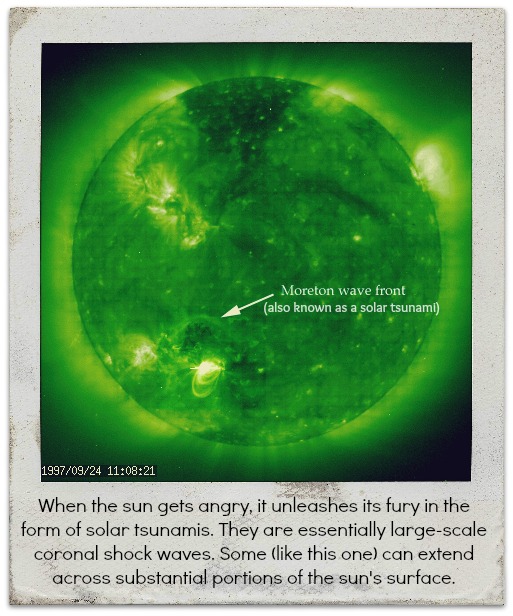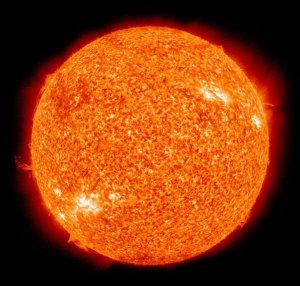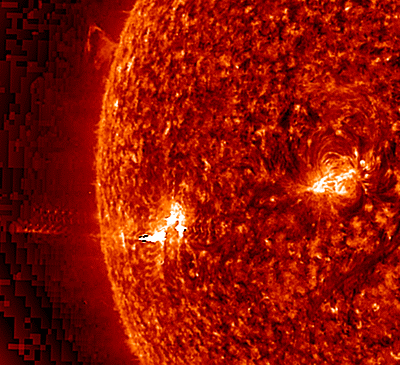

Do you love diving into the crisp, salty waters of the ocean? Love to feel the sand rolling beneath your feet as you plod through the surf? Do you like the smell of your skin being scorched from your bones, and the feel of your blood as it is boiled from your body?
If you answered “yes” to the first two, you’d probably enjoy catching a few waves on some of California’s exquisite beaches. If you answered “yes” to all three, you’d probably enjoy catching a few solar waves on the Sun’s surface (and you might be a teensy bit crazy, but who am I to judge?).
We all know about the tsunamis that crash across our planet. And we know about the destruction that they can cause. Who can forget the horrifying 2004 Indian Ocean tsunami, with its waves reaching some 95 feet (30 meters) in the air? If tsunamis on Earth are so unspeakably powerful, what can be said about solar tsunamis?
Little more than simply the facts…

In 2009, two STERO spacecraft observed a solar tsunami of epic proportions. (On the right) This mega-wave of energy blasted across the Sun at over 550,000 mph (900,000 kmh). What’s more, this solar tsunami was over 60,000 miles (100,000 kilometers). How can we possibly compare this with the tsunamis we experience here on Earth?
And this beast was really just a baby. It is believed that the largest solar tsunamis can travel over 1million mph (1.6 million kmh). If an oceanic wave of this magnitude were to somehow come into being on our own little planet, it would literally annihilate every structure on the surface of the Earth—buildings, trees, people, even the land itself would fall beneath such extreme force. Our planet would become a smooth wasteland.

So where do these giants come from? Solar tsunamis are essentially large-scale solar coronal shock waves. These shock waves are generated by solar flares as they stream from the Sun. In the scientific community, the tsunamis are typically known as “Moreton Waves.” American astronomer, Gail Moreton, first observed solar tsunamis in 1959 using time-lapse photography. At the time, Moreton was working as an observer at the Lockheed Solar Observatory in Burbank. He discovered them in time-lapse photography of the chromosphere in the light of the Balmer alpha transition.
Several solar tsunamis have recently been observed by NASA’s space-based Solar Dynamics Observatory (SDO). And they are getting bigger and more powerful. These gigantic waves are just the latest solar storm activity observed as the Sun continues on its 11-year cycle of magnetic fluctuations, drawing ever closer to solar peak.
So you may want to brush up on your solar storms… because interesting things lie ahead in the coming months.